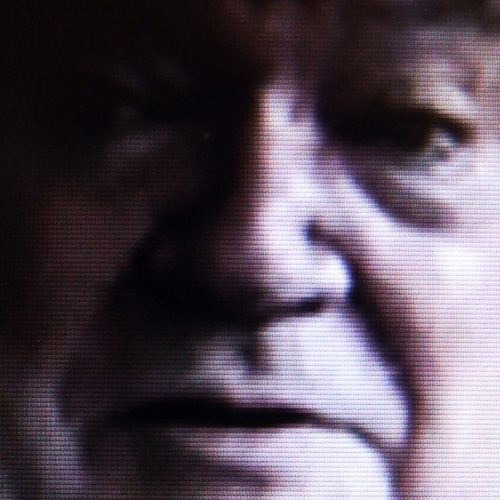The death of Robert Hughes, 74, the most famous art critic since Clement Greenberg, leaves a gaping hole in the fabric of contemporary American discourse on art and culture. Loved by some, hated by others, Hughes brought explanatory, opinionated, often virulent criticism to magazine racks in grocery stores all over the world through the pages of Time Magazine.
And he could write like nobody’s business.
Condemned by many as a conservative mud-slinger who took pleasure in showing us the weak little men behind the curtains of the mega-art market, Hughes was as constructively critical as he was destructive, and his ability to turn a phrase left even those who disagreed with him in awe.
The Sotheby’s side of the art world has come to resemble something like the South Florida real estate market, with polyester-suited speculators rather than art lovers buying up tiny pieces of vertically hanging property.
During the culture wars he conceded that avant-garde work by artists such as Andres Serrano should not be expected to draw public funding. But he attacked the American right wing, viciously and politically, for seeking to end financial support for art and culture. In his 1995 Time essay, “Why America Shouldn’t Kill Cultural Funding,” he wrote, “The Republican leadership in Congress means to sever all links between American government and American culture,” a statement that’s still true today.
Hughes knew artists need money to survive, and despised the myth that poverty and starvation are formulas for good work. “On the whole, money does artists much more good than harm. The idea that one benefits from cold water, crusts and debt collectors is now almost extinct, like belief in the reformatory power of flogging,” Hughes wrote. His was not a liberal or a conservative view, but one based on common sense.
Australian-born Hughes forged his style during the years when Soho was on the rise. He will best be remembered for assailing the “new” superstars of art. The harshest words he wrote were aimed squarely at the overrated and arrogant 1980s painter Julian Schnabel, who as we speak, has all-but disappeared from the art world to concentrate on film.
“Schnabel is to painting what (Sylvester) Stallone is to acting—a lurching display of oily pectorals—except that Schnabel makes bigger public claims for himself,” he wrote in another Time article in which he went on to label the painter from the Lone Star state a “Texas starlet.” For years, Schnabel remained angry, taking shots at Hughes in interviews. The artist became a living example of William Shakespeare’s 17th Century line from Hamlet, “The lady doth protest too much, methinks.”
The influence of big dumb money, Beatlemania-style idolatry, and the cult of celebrity in art was perhaps what concerned the critic most.
Hughes was similarly merciless in writing about artist Jeff Koons for The Guardian: “He has the slimy assurance, the gross patter about transcendence through art, of a blow-dried Baptist selling swamp acres in Florida,” Hughes wrote. “And the result is that you can’t imagine America’s singularly depraved culture without him. He fits into Bush’s America the way Warhol fitted into Reagan’s. There may be worse things waiting in the wings.”
And he was dead on. The Sotheby’s side of the art world, always whorish and flagrantly capitalistic, has since come to resemble something like the South Florida real estate market, with polyester-suited speculators rather than art lovers buying up what are in essence tiny pieces of vertically hanging property, with the sole interest of “flipping” them later. It’s a get-rich-quick scheme, a shell game, and Hughes saw it coming.
The influence of big dumb money, Beatlemania-style idolatry, and the cult of celebrity in art was perhaps what concerned the critic most. For him, art was a pursuit of understanding, a hunt for hidden spiritualities, and the greatest of human activities. He believed that from the 1980s onward, the art world had become something like the movie industry—a self-promoting machine producing pap to be sold as culture.
He knew that despite politically correct and relativistic values, there is a difference between good and bad art.
“The art world is now so swollen with currency and the vanity of inflated reputation that it is taking on some of the less creditable aspects of showbiz,” he wrote. “Hollywood doesn’t want critics, it wants PR folk and profile-writers. Showbiz controls journalism by controlling access. The art world hopes to do the same, though on a more piddly level.”
There are many styles of criticism. Most of it nowadays worships at the altar of the art-gods-come-to-earth. Art magazines, after all, survive partly on high-end gallery advertising money and not many critics are willing to bite the hand that feeds them. Hughes didn’t care. Like Greenberg decades earlier, he knew that despite politically correct and relativistic values, there is a difference between good and bad art. And it was important to shine a spotlight on both. What many of us will miss most about Hughes, though, is not his bile, but his poignantly penned praise for the artists he loved.
Of 18th and 19th Century Spanish painter Francisco Goya, Hughes wrote, “his work speaks with an urgency that no other painter of his time can muster. We see his long-dead face pressed against the glass of our terrible times, Goya looking in on a world worse than his own.”
He authored a one-line comment on Italian Baroque painter Caravaggio so precise and economical it would have made Ernest Hemingway green with envy:
“There was art before him and art after him, and they were not the same.”
In the wake of his death, Hughes is being examined more closely than ever. Those who loathed him for not embracing Koons, Damien Hirst and other self-produced icons of our age, will hate him still. Those of us who loved him for his knowledge, irreverence, the quick blade of his critical sword, and his skill with words, are left wishing he had lived a little longer, to have written a lot more.
